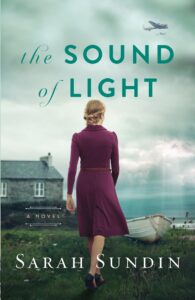Sarah Sundin, @sarahsundin
Are you a left-brained, list-making, analyzing writer? Are you a right-brained, creative, spontaneous writer? Some combination? If you’re attending a writers’ conference, engage both halves of your brain and plan the right way—and the left way.
Having attended dozens of writers’ conferences—and now serving as the co-director for the West Coast Christian Writers Conference—I’ve found it’s best to let the left brain reign before the conference and the right brain fly free during the conference.
The Left Way
Before the conference, analyze, plan, and make lists. Proper preparation allows you to get the most out of the conference and be relaxed.
- Decide which tracks and workshops to take
Analyze your strengths and weaknesses as a writer, as well as where you are in your manuscript and your career. Pick workshops to target your weaknesses or solidify your strengths, and try to balance between craft and publicity.
- Decide which editors, agents, and published authors you want to meet
At many conferences, you can schedule appointments with editors, agents, or professional writers. Sometimes you schedule those at registration and sometimes when you arrive at the conference. In addition, make a list of professionals you’d like to meet—at workshops, meals, etc. This list can keep you focused during the flurry of a conference.
- Prepare your pitch
The most common question you will be asked at conference is “What do you write?” Be prepared to answer with a sparkling one- to two-sentence description. Also be prepared to answer follow-up questions with more detail. But not too much detail. Really.
- Print business cards—and exchange them freely
A simple way to remember the wonderful people you meet. Make sure to include your photo, email, and website. You can get inexpensive but professional-looking cards printed through many online vendors.
- Prepare your one-sheet
At some conferences, one-sheets are expected, but at others they’re optional. So what is a one-sheet? It’s “you and your project” on a single piece of paper. A catchy tagline, a short paragraph describing your novel or series, a short bio, and your contact info. Include your photo, and use graphics, fonts, and colors that coordinate with the feel of your story while still looking professional. Don’t overload the page or use micro-fonts. White space is your friend.

The Right Way
At the conference, work your plan but let your right brain frolic. Serendipity tends to produce the best conference moments.
- Let your creativity play
You will learn so much and be surrounded by hundreds of creative people. Soak it in. Brainstorm characters, plotlines, and more. Turn off your internal editor and resist the urge to burn your manuscript.
- Veer off your list
Your list of professionals to meet is a guide, not Scripture. Try to meet others, even those who aren’t looking for your genre. The publishing industry is fluid, and the editor from House A may be with House B next year—or have become an agent. That casual conversation you had over dinner might lead somewhere unexpected. And don’t forget, these people know the industry. Ask questions, absorb, and simply enjoy them as people.
- Meet new friends
While targeting professionals, don’t overlook the person next to you in a workshop or at a meal. I’ve met some of my dearest friends this way. We struggled along the pre-published road with each other and now we explore the world of publication together.
- Watch for God appointments
My best conference moments have come when I set aside my plan. Pray with those who’ve been rejected, who need a boost before an appointment, or who struggle with personal or family issues. Skip a workshop to connect with a friend. Introduce people with similar interests. Listen for God’s voice about your writing and life. When you look for God at work, you’ll find Him.
If we attend the same conference, please veer off your list to say hi!
In what ways have you been blessed by planning or by serendipity? How can you best prepare while staying open to spontaneity?
When the Germans march into Denmark, Baron Henrik Ahlefeldt exchanges his nobility for anonymity, assuming a new identity so he can secretly row messages for the Danish Resistance across the waters to Sweden. American physicist Dr. Else Jensen refuses to leave Copenhagen and abandon her research—her life’s dream—and makes a dangerous decision to print resistance newspapers.
As Else hears rumors of the movement’s legendary Havmand—the merman—she also becomes intrigued by the mysterious and silent shipyard worker living in the same boardinghouse. Henrik makes every effort to conceal his noble upbringing, but he is torn between the façade he must maintain and the woman he is beginning to fall in love with.
When the Occupation cracks down on the Danes, these two passionate people will discover if there is more power in speech . . . or in silence.
Sarah Sundin is an ECPA- and CBA-bestselling author of World War II novels, including The Sound of Light (Revell, February 2023). Her novel Until Leaves Fall in Paris won the 2022 Christy Award, When Twilight Breaks, and The Land Beneath Us were Christy Award finalists, and The Sky Above Us won the 2020 Carol Award. A mother of three adult children, Sarah lives in Southern California and enjoys speaking for church, community, and writers’ groups. She serves as Co-Director for the West Coast Christian Writers Conference. You can find her at http://www.sarahsundin.com



